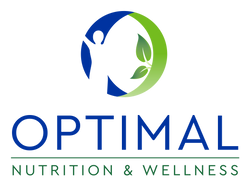GIGO – In computer science, garbage in, garbage out describes the concept that flawed, or nonsense input data produces nonsense output or “garbage.” (Wikipedia)
My computer has been running slower and slower lately. It hasn’t acted like its perky self in months, and has been popping up messages that I could not decipher. I was ready to go buy a new computer and start afresh. Over Christmas break, my computer savvy children all took turns cleaning up my computer and cleaning out all the things that didn’t belong. They knew that removing the trash was important for optimal function. I just didn’t know how to do it. Now it’s performing almost like new, and I am slightly better equipped to care for it. As I watched my kids work to unburden my computer, it occurred to me that our bodies and computers have a lot in common.
Day in and day out we put countless chemical products on our bodies. We put chemically-laden food, water, and drinks into our bodies. We breathe air into our lungs, we lotion up dry skin, we swipe deodorant under our arms, we wash our hair, we bathe in chlorinated and fluoridated water, we put on make-up and spritz with cologne loaded with endocrine disruptors, we wear clothing washed in harsh detergents, we sit on furniture covered in flame-retardant fabrics, we sleep on mattresses containing toxic materials with sheets washed in that same detergent. The list could go on and on.
No doubt our modern world makes it difficult for us to know all the chemicals that are going into our bodies on a daily basis. We are easily seduced by product advertising (think wrinkle reducing creams). Indeed, entire aisles in our stores are stocked with personal care products all claiming to make us look, feel or smell better than we currently do. But do these products actually solve our problems, or are they just “putting lipstick on a pig” as the old adage goes? Could it be that they just contribute more to the toxic load our bodies have to carry?
The emphasis quite often is to regulate what goes in and on our bodies, but how much time do we spend helping our bodies "take out the trash", aka, detoxing? Many of us don’t even know our detox pathways! Let’s take a little dumpster dive into the world of cellular garbage and detox and think of some simple ways we can show some love to these organs and systems. The following ideas will not be an exhaustive list, but rather a jumping off point to get you started.
THE LIVER
The liver is King in the world of detox. Besides performing numerous other functions, it rules over every toxin in your body, cleaning and filtering every ounce of your blood and metabolizing every chemical that comes through it. It works 24/7 and deserves a round of applause for its amazing capabilities. As awesome as your liver is, it can become overwhelmed by a heavy toxic load. Here are a few things we can do to lend a hand to a tired liver.
- Use a castor oil pack over your liver once or twice a week to reduce inflammation, improve its ability to detox, and to optimize its function. There are numerous YouTube videos on how to do this.
- Eat cruciferous vegetables which provide the liver with compounds that aid in breaking down chemicals and hormones.
- Utilize spices and herbs such as turmeric, ginger, and dandelion tea to optimize liver function.
- Drink clean water or green tea, not sugary drinks.
- Cut back or eliminate alcohol.
- Exercise and eat clean.
- Hevert Detox Liver
THE KIDNEYS
If the liver is King, the kidneys are the Queens of detox. They are small but powerful multi-tasking organs regulating fluid and balancing minerals, balancing pH, regulating blood pressure, and secreting chemicals which trigger the release of antidiuretic hormones and aldosterone. Their role in detoxing the body is to filter our blood at the rate of about 1200 ml every minute. That number equals approximately one fourth of a person’s blood volume every single minute. We can assist this amazing pair of organs by:
- Drinking plenty of water to stay hydrated
- Eating a clean diet rich in fruits and vegetables
- Using a sauna
- Hevert Detox Kidney
THE LYMPHATIC SYSTEM
The lymphatic system is a complex system stretching from head to toe consisting of organs, nodes, glands, fluid, and tissue. It filters and moves toxins and waste away from our tissues and into the bloodstream where our spleen can then do its work of purification. Filled with immune cells it also works to defend our bodies against invaders that are up to no good. Some of those invaders are external including food, water and personal care items. Others such as damaged cells and metabolic waste are from within. Organs included in the lymphatic system are our spleen, tonsils, adenoids and thymus. But here lies the problem….our lymphatic system has no pump. Lymph only moves when our muscles and joints move causing contractions and relaxation. Without movement our lymph becomes toxic sludge, and we experience a whole host of problems.
So here’s the skinny on keeping the lymph moving on the healthy detox highway in your body.
- Walk. If you can’t walk, sit in a chair and tap your feet on the floor for a few minutes numerous times throughout the day.
- Rebound—An inexpensive rebounder can be used in your home. Try using it during commercials while you watch TV. If you enjoy jumping, go all out and get a trampoline. Your feet don’t even need to leave the mat for rebounding to work its magic. A gentle bounce is even beneficial and your children and grand children will give you bonus points for the fun it provides.
- Dry brushing—You Tube has some good instructional videos demonstrating proper dry brushing technique.
- Drink water, water, water, and for a boost add a little lemon.
- Massage. There are therapists who specialize in lymphatic massage although most general massage therapists know how to move lymph also.
- Ladies, go wireless (and I’m not talking about your internet). Find a comfortable bra that isn’t tight around your middle. Your lymph will flow much more freely throughout your body, and as a bonus you will enjoy not being pinched.
- Eat raw fruits and vegetables providing enzymes to your body that help break down toxins.
- Hevert Detox Lymph
THE COLON
Food reaches our colon towards the end of the digestive process. Once food passes through the small intestines most of the nutrients have been absorbed into the body and mostly liquid is passed into the colon. The colon absorbs the water, and bacteria in the colon break down the remaining material. The waste is then moved into the rectum and out of the body in the form of stool. Detoxing and supporting our colon is achieved through:
- Feeding our bodies clean fruits, vegetables, proteins, healthy fats, and omegas to maintain good gut bacteria.
- Ensuring our body is eliminating on a regular basis. A good goal to keep in mind is two to four times a day.
- Probiotics can be helpful when balancing gut flora.
- Hevert Detox Intestinum
SKIN
Our skin is the largest organ we have, and just as we absorb things through it, we can also sweat out toxins through it. When our main detox organs are working at full capacity and still can’t handle the toxic load, our bodies begin to store those extra toxins in our fat. This is where the benefits of sweating come into play.
- Spend time regularly in a sauna. Don’t worry about the type of sauna—any kind will work. Check with your local gym to see if they have one.
- Use very hot water and take detox baths. They can be as simple as using Epsom salt, baking soda or hydrogen peroxide. Here is a link to some fancier recipes. https://shop.davidwolfe.com/blogs/health/detox-bath-recipes
After any exercise or sauna, shower off with clean cool water to remove the toxins you have just sweated out. You certainly do not want to reabsorb them into your skin.
If you do not sweat, you might want to consider making an appointment with Dr. Matalone to discuss this. In some instances, a lack of sweating can possibly indicate an iodine deficiency which affects all cells but particularly glandular cells.
THE LUNGS
Our lungs are also significant detox pathways for our bodies as we exhale carbon dioxide and cough up irritants. Simple ways we can support good lung health are:
- Breathe clean air as often as possible. Consider a good air filter for your home and especially for your bedroom since many hours are spent sleeping there.
- Exercise regularly.
- Eat antioxidant-rich foods and drink plenty of clean water.
- Use steam therapy or a nebulizer.
When we talk about mopping up the toxins and destroying sick cells, it would be negligent to not briefly mention the tremendous benefits of fasting. A simple introduction to fasting is to daily include a minimum of a 12-hour fast. It’s relatively easy to do this. Simply stop eating preferably early evening (three to four hours before bed) and fast for at least twelve hours. This gives our enzymes an opportunity to do some general housekeeping instead of just working on digestion.
As you can see there are numerous ways to aid our bodies in the detox process. A clean, balanced diet and clean water affect all detox pathways as does a daily twelve hour fast; therefore, they are good places to start. The important thing to remember is that we are regularly detoxing in some form or fashion. Dr. Matalone recommends the Hevert Detox kit which offers good support to our liver, kidneys, lymphatic system and gut to be used about 4 times a year. The kit may be ordered at www.shop.drmatalone.com or by calling the store at 404.941.8625. Our office also welcomes any questions you have concerning a detox protocol that is right for you.






